Ask Ethan # 16: What are variable stars?
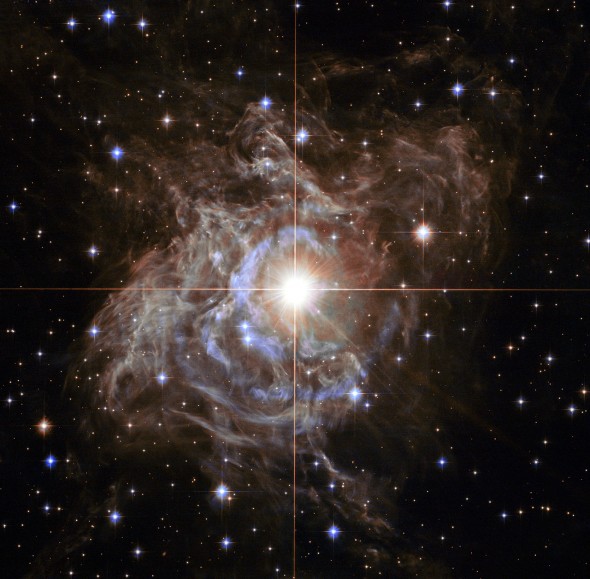
In this photo from Hubble, RS Puppis is a variable cepheid-type star. The period of change of Cepheids is quite large - for example, the brightness of this star changes five times every 40 days. It is surrounded by dense dark clouds of dust, which allows to observe the effect of the light echo in detail.
To be is to be the value of a variable.
- Willard Van Orman Quine
The reader asks:
After watching the video about the variable star RS Puppis, shot with a telescope. Hubble, I really would like to know what variable stars are.
Indeed, there was a video in which the star RS Puppis was presented, the brightness of which changes with time, and there it was shown how this leads to the appearance of a light echo :
')
It looks amazing, and I really want to tell you about it, but three different ways come to my mind, depending on the point of view that you would like to follow: historical, scientific, or physical. There are a lot of nuances in this phenomenon, so let's consider all three approaches!
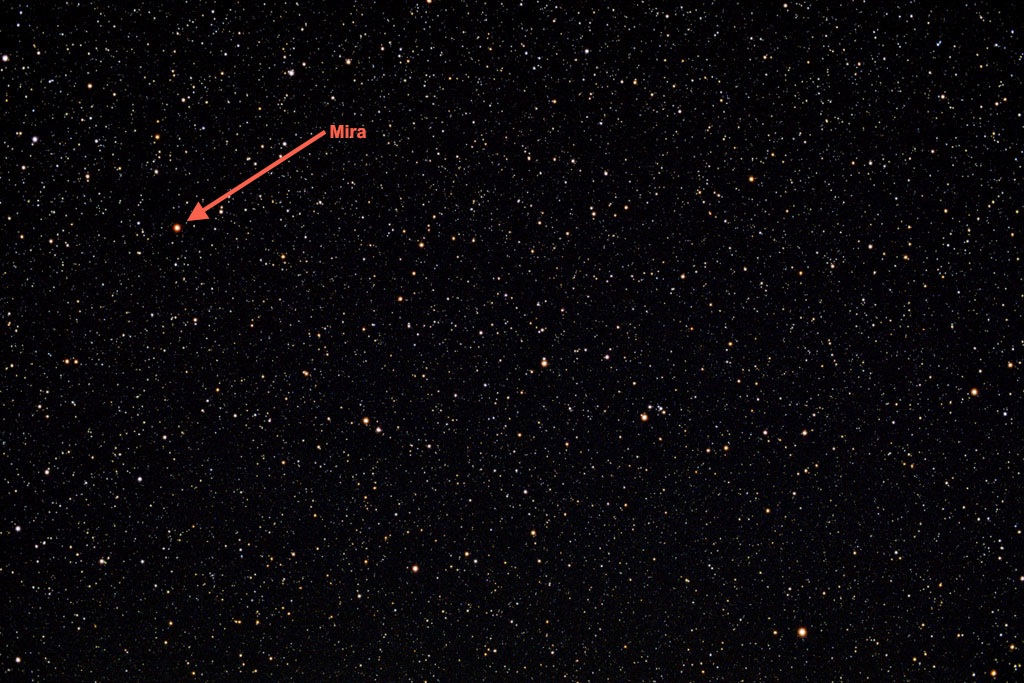
1) Historical. Once upon a time, it was believed that stars are fixed points in the sky. Sometimes there was a catastrophic event like the appearance of a supernova, which created a temporary bright object in the sky. But such events were quite rare, and very few such phenomena could be observed with the naked eye throughout human history. Although most stars really do not change their position and brightness, but this is not true for all of them. In 1596, David Fabricius saw something in the sky, and decided that it was a supernova because he saw a dot in the sky, which shone brightly in August and then completely disappeared in late October. But to his surprise, the point reappeared in the sky in 1609. No supernova has appeared twice before. What Fabritius saw was not a supernova, but Mira, in fact, the first open variable star.

At first, it was believed that variable stars are quite rare, because it took two whole centuries before they were counted 10 pieces. But the number of detected variable stars has increased dramatically with the advent of astrophotography. It became possible to accurately measure and directly compare the apparent brightness of a star over a period of days, weeks, months, and even years — both the strength of the brightness change and the period of its change.
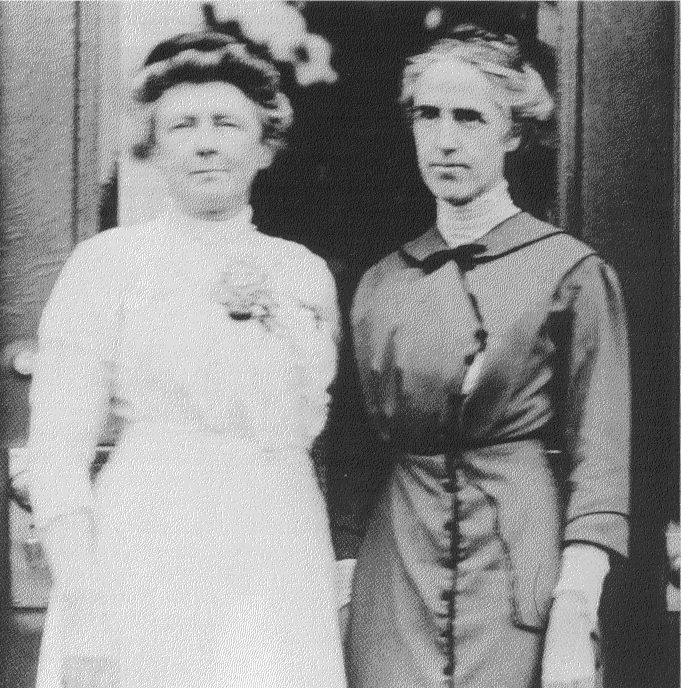
In the early 1890s, a young woman named Henrietta Lewit attended the Society of Collective Institutions for Women, now known as the Radcliffe College. In 1893 she was hired at the Harvard Observatory to measure and catalog the brightness of the stars captured in the collection of photographic plates of the observatory. In particular, she cataloged the stars found in the Small Magellanic Cloud, and over the next twenty years she found more than a thousand variable stars of different classes, which she cataloged.
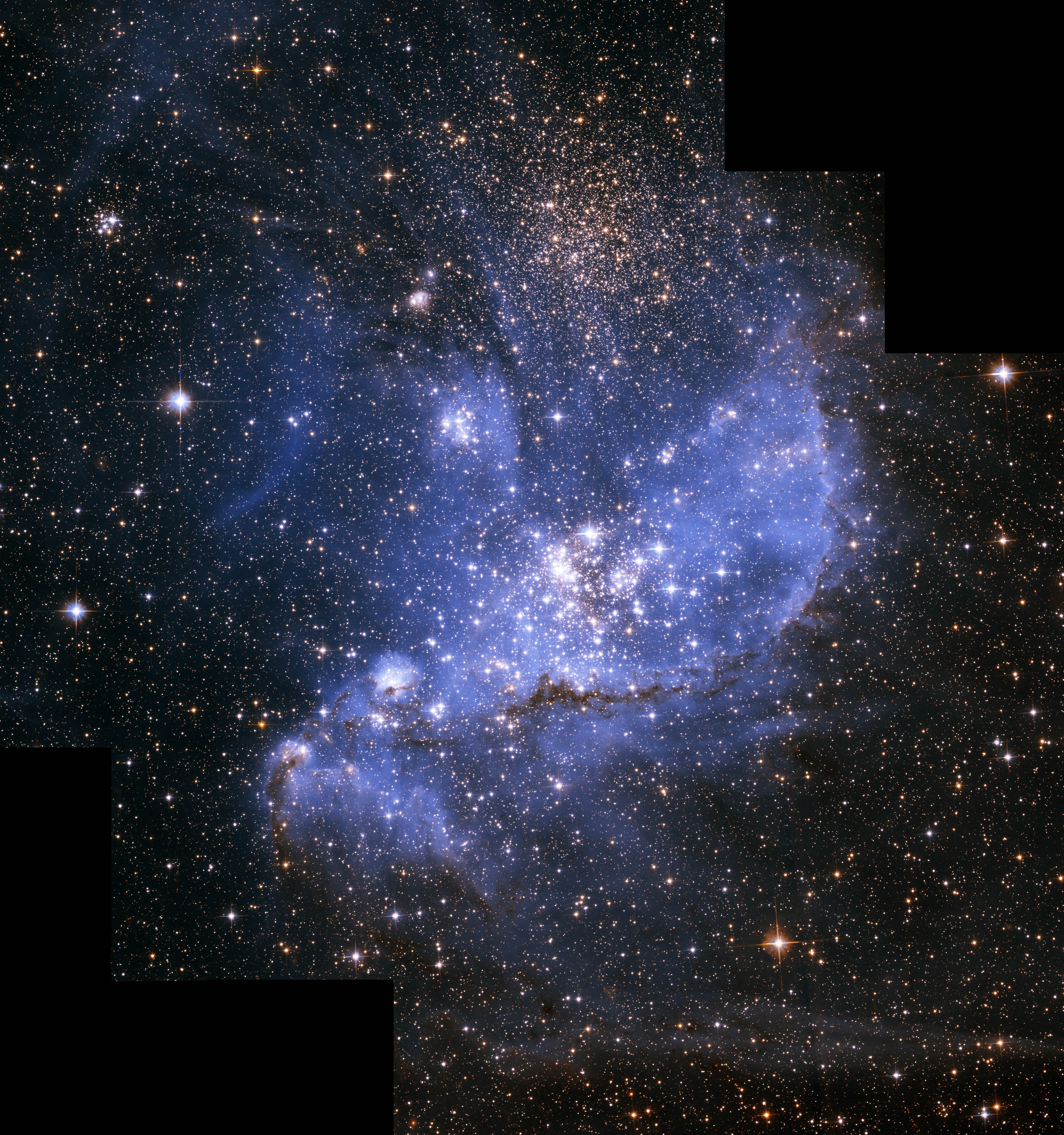
But one of the star classes, Cepheids, was particularly interesting, as Lewit noticed. When she observed the 25 brightest Cepheids, she saw that their period of change in brightness was longer than that of other stars — the period in which they reached maximum brightness, then became dimmer and returned to maximum brightness. All the stars changed in brightness by about the same magnitude (in the sense of visual magnitude), but the brightest stars took several months to go from bright to dim, and back to bright. When the average brightness of the observed stars decreased, the period of brightness variation also decreased. The duller the star was, the faster its brightness changed, up to a period of one day. In fact, she found a well-observed correlation between how bright the medium was on average and the period of change in its brightness.
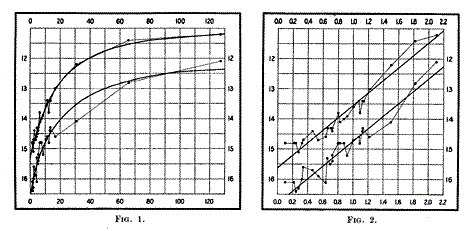
This connection is known today as the ratio of period and brightness, and this discovery led to surprising consequences, which lead us to the second way of answering the question of variable stars.

2) Scientific. Regarding the Cepheids discovered by Lewit, it can be said that they were stars that are quite long distances from us — about 199,000 light years. And the physical size of the object in which these stars were located was approximately 7,000 light years. Because of this, all the stars in the Small Magellanic Cloud are approximately at the same distance from Earth. Changes in the brightness of stars corresponds to their actual luminosity. If there is a link between the period of the star's pulsation and its brightness, this means that if you measure the period of a variable cepheid star, you will know what its actual luminosity is. And if you measure luminosity, then knowing how brightness and distance are related, you can calculate the distance to it.
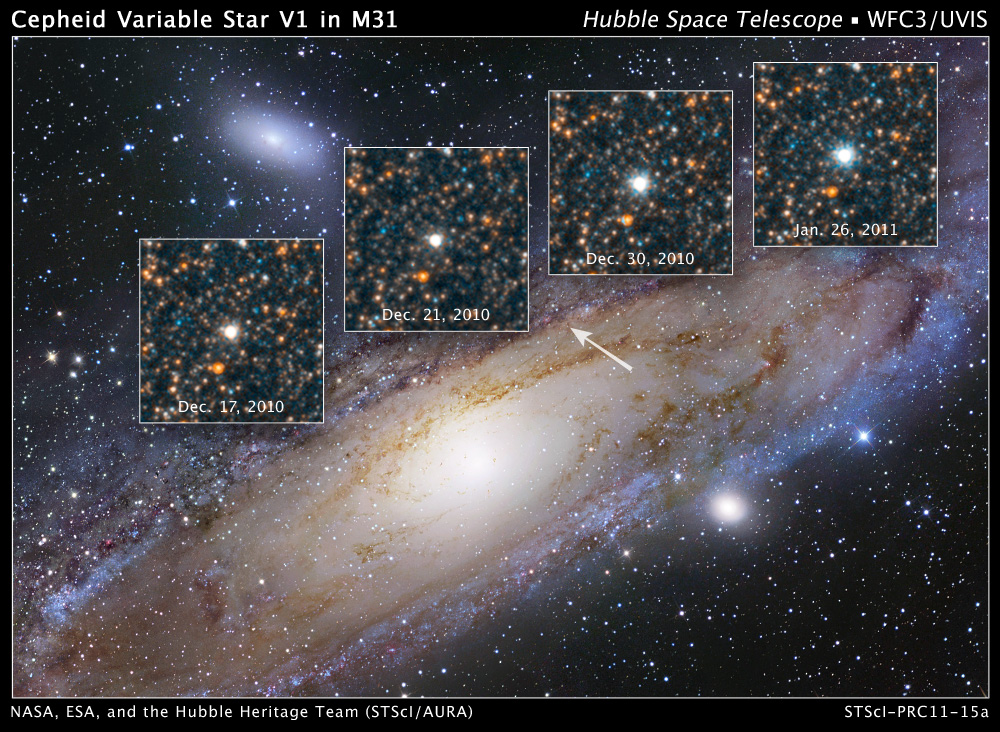
We call these objects “standards candles” because if you know the real brightness with which the object is lit, and then you measure the visible brightness, then you can understand how far the object is from you. Thanks to the work of Henrietta Lewitt on Cepheids, we have standard candles for measuring huge distances in space. And thanks to Edwin Hubble and the discovery of variable stars located in spiral nebulae that he observed in the 1920s, we were able to understand how far these objects (turned out to be galaxies) really are.

There are a large number of types of variable stars, which differ from each other in color and brightness. In addition to the Cepheids found by Lewitt (of which there are 2 types) there are stars with a smaller mass and a smaller period of RR Lyrae, variable red giants (such as Mira), pulsating white dwarfs and a whole crowd of others, some of which are shown in the picture below.

For the most part, there is a well-defined correlation between the periods of change of these objects and their nominal luminosity, which means that if we find and identify them somewhere, then we can immediately find out with high precision how far the object is. And, according to science, this is one of the most important discoveries related to the cosmic distance ladder. The best way to measure distances to stars is parallax, or a change in their positions in the sky during the year (when the Earth revolves around the Sun). But this method works only for stars located at a distance of 1600 light years from us. Although, the mission of Gaia, launched recently, will try to increase this distance tenfold.
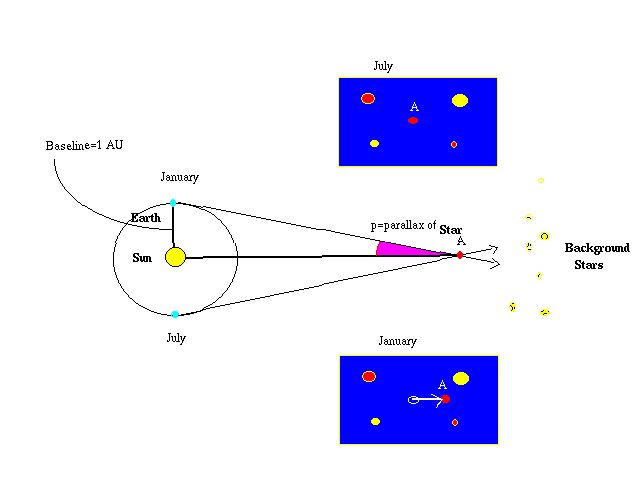
But at a distance of 1600 light years from Earth, there are quite a few variable stars, for which we measured and with the help of parallax. And there are also many variable stars, the distance to which, judging by estimates, is at least 100 million light years.

Observing how these stars change with time, how their brightness changes, what period of brightness they have, we attributed these stars to the corresponding class of variables, and thus have already determined the distances to thousands of space objects outside our galaxy. So now we know how we discovered them, we know what they are used for, but why does their brightness change? And that brings us to the third answer.
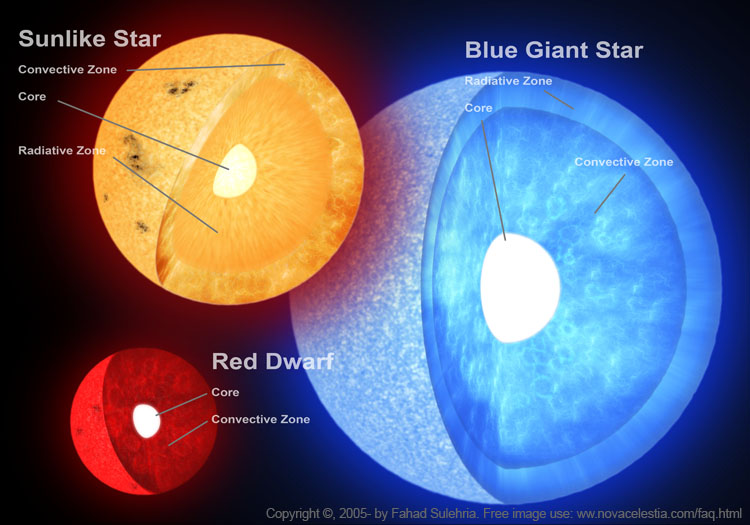
3) Physical . It can be decided (and this will be wrong) that the core of the star, where nuclear fusion occurs, is experiencing some changes that are transmitted to the surface, which leads to pulsations. This is unlikely, because the time spent by a photon created in the nucleus to reach the surface of a star is approximately 100,000 years. During this time, he has trillions of collisions! Generally speaking, the rate of synthesis in the core for all known types of stars is almost the same. And, nevertheless, the brightness of the stars is changing
For most variable stars, the brightness changes are due to what happens in the outer layers.
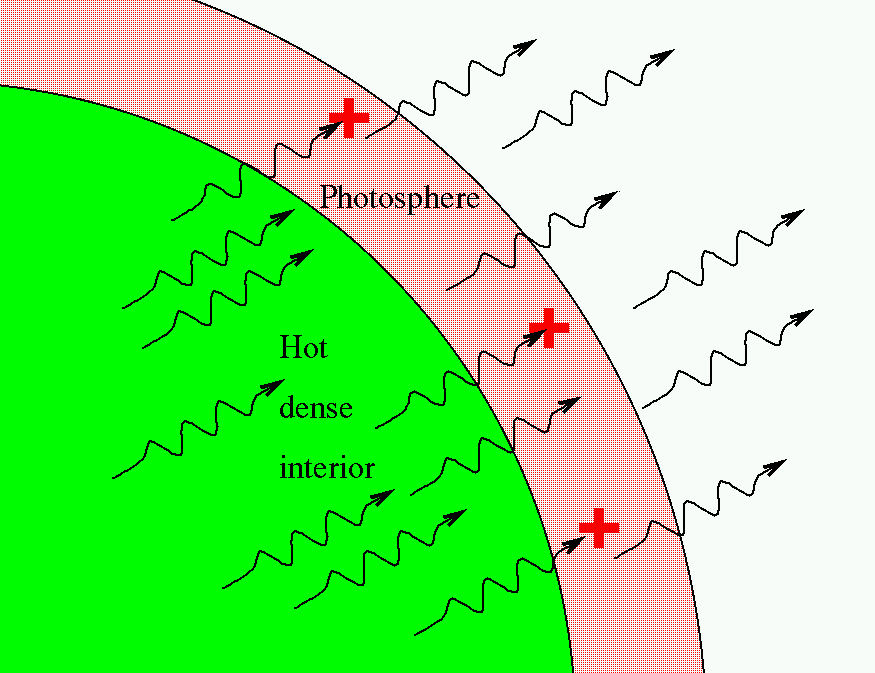
The star's photosphere, the layer from which photons fly away from the star forever, is a special place from the point of view of physics. For a very stable star, the photosphere will remain constant over time. The radiation pressure, which pushes the particles out, on the surface will be fully compensated by the force of gravity, which pulls the particles into the center of the star. The sun is a close approximation of this model, but even such a boring star as the sun is not perfect in this sense.
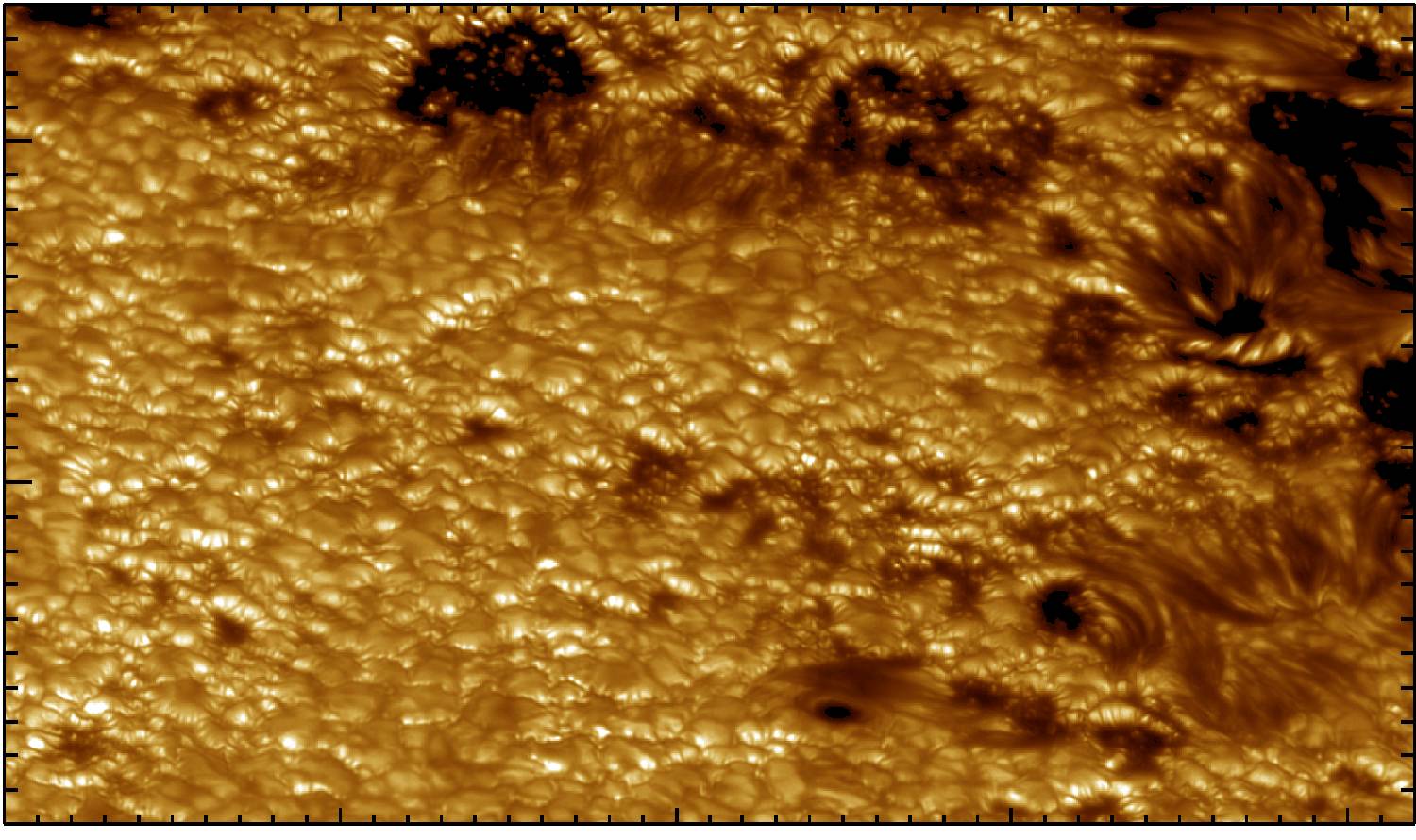
Even in the Sun, the outer layers experience convection - the rise and descent of matter. In such systems, equilibrium is never achieved, and the outer layers are subject to a cyclic process in which:
- too much pressure forces the star to expand
- when it expands and the upper layer moves away from the center of the star, gravity drops, but the radiation pressure drops faster.
- as a result, the acceleration of the outer layer slows down, passes the equilibrium point and reaches a state where gravity is stronger than the radiation pressure
- then it starts moving inward with acceleration, which causes the star to contract
- it again passes through the equilibrium point to the other side, when the radiation pressure rises to the point where it begins again to force the layers outwards and the cycle repeats.
The intensity of our sun fluctuates at the level of 0.1%.
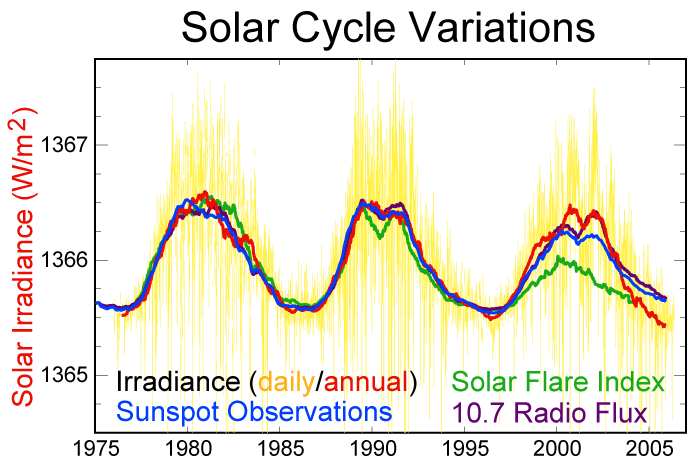
But for stars, which we call variable, brightness and radius can change by a huge value - by 90% or even more! For stars like Mira, the actual luminosity changes during one cycle a thousand times, while with ordinary Cepheids the radius changes by millions of kilometers, and the temperatures by thousands of degrees.

This topic is a storehouse of interesting information, because amateurs and professionals spend their whole lives studying such objects. I gave you an introductory topic on variable stars, and now we know how they were discovered, what they are used for, and why they are variables. For further study, I recommend AAVSO (American Association for Variable Star Observers, American Association of Variable Star Observers). There is interesting information for both researchers and ordinary lovers.
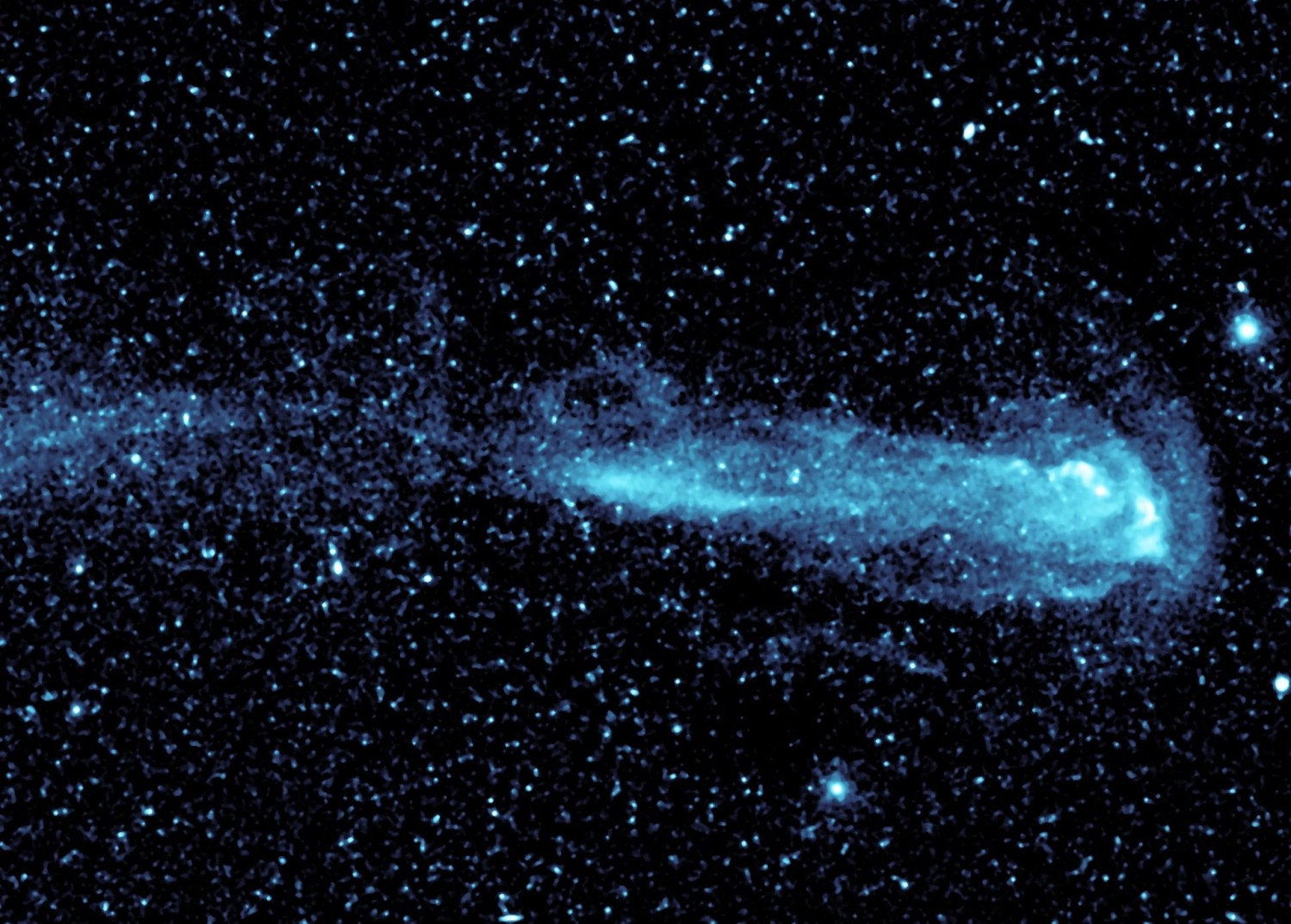
Source: https://habr.com/ru/post/365827/
All Articles